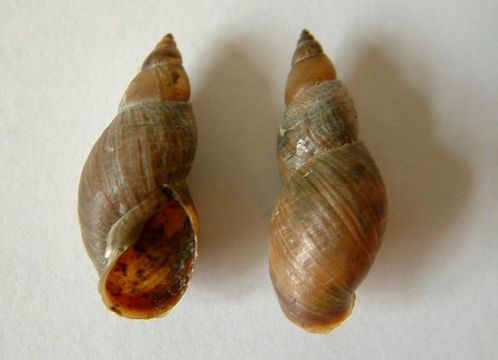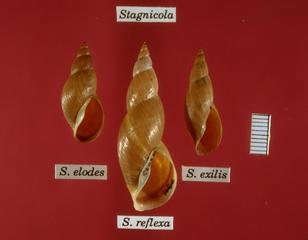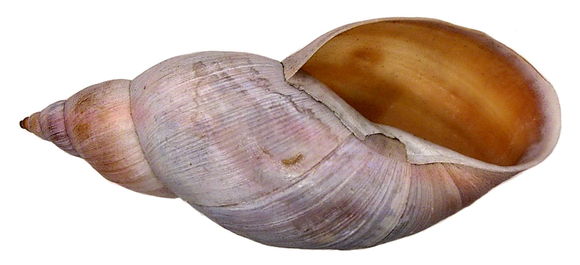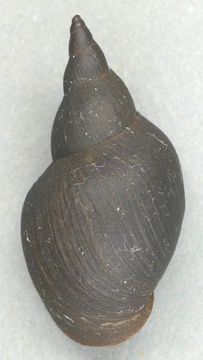Interactions
 Some
interactions Stagnicola snails has with other organisms
include being hosts for different parasitic organisms. Scott M.
Martin reports two different organisms that infest Stagnicola
species. In 1881, a German parasitologist Leuckart discovered
that Lymnaeid snails serve as an intermediate host for the
shiver liver fluke, Fasciola hepatica (Martin, 1999). The fluke
infests the snail, leaves as a cercaria larva, encysts on
aquatic vegetation as a metacercaria, and then waits until it
was consumed by a herbivore (Martin, 1999). Fasciola hepatica infects
many mammals including deer, cattle, pigs, and even humans
(Martin, 1999). Also, Stagnicola eldoes
is an intermediate host, in the Great Lakes region, for a
condition called "swimmer's itch" (Martin, 1999). This irritating condition
occurs when the parasitic stages of trematodes leave the snail,
and fail to penetrate into the human skin. The normal hosts of
the parasite is usually ducks. "Swimmer's itch" is a schistosome
dermatitis and humans catch this condition by swimming in
infected waters
(Martin, 1999).
Some
interactions Stagnicola snails has with other organisms
include being hosts for different parasitic organisms. Scott M.
Martin reports two different organisms that infest Stagnicola
species. In 1881, a German parasitologist Leuckart discovered
that Lymnaeid snails serve as an intermediate host for the
shiver liver fluke, Fasciola hepatica (Martin, 1999). The fluke
infests the snail, leaves as a cercaria larva, encysts on
aquatic vegetation as a metacercaria, and then waits until it
was consumed by a herbivore (Martin, 1999). Fasciola hepatica infects
many mammals including deer, cattle, pigs, and even humans
(Martin, 1999). Also, Stagnicola eldoes
is an intermediate host, in the Great Lakes region, for a
condition called "swimmer's itch" (Martin, 1999). This irritating condition
occurs when the parasitic stages of trematodes leave the snail,
and fail to penetrate into the human skin. The normal hosts of
the parasite is usually ducks. "Swimmer's itch" is a schistosome
dermatitis and humans catch this condition by swimming in
infected waters
(Martin, 1999).
Burch (1989) suggests that Stagnicola reflexa is simply a morph of Stagnicola elodes (NatureServe, 2010). As well, many species have been listed together under the name palustris. However, Stagnicola elodes is the first name that was applied to the palustris-like species (NatureServe, 2010). Lymnaeidae was considered to be made up of one genus called Lymnaea until 1970. Now it consists of many genera, the two main including Lymnaea and Stagnicola (Clifford, 1991). This however causes issues of morphological variation within species. Some cannot tell the difference between juveniles and small adults. This in turn could be why synonymy has occurred many times before. Stagnicola elodes has been commonly related and sometimes referred to as Lymnaea Palustris, Stagnicola reflexa, Stagnicola palustris, and Lymnaea elodes (NatureServe, 2010).



Stagnicola elodes & Stagnicola reflexa Stagnicola palustris Lymnaea palustris